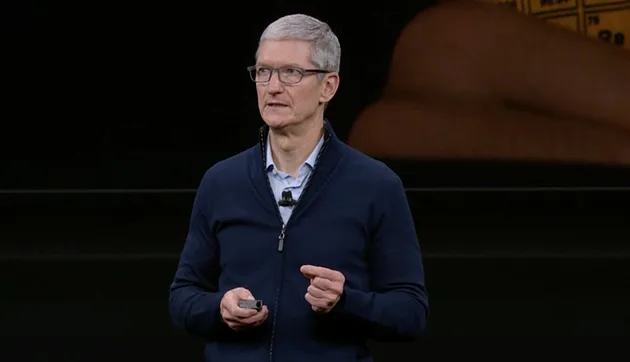
Apple Special Event AV Lessons 14/11/2017
What a great webcast that was. The highlight for me was that great venue. The Steve Jobs Theatre, introduced to us with a Beatles soundtrack and some beautifully shots of the lovely exterior and foyer.
Here are a few AV related take aways from one of the worlds most watched events:
Venue

This particular event has a few important lessons which you may find helpful for your next event.
Firstly, venue choice is very important, and when ever it’s possible to custom build an entire venue for the event you will be hosting, you should always do that.
On a more practical note, if your event is going to require this amount of technology then you should involve your tech team in the venue scouting process because as the technical complexity increases, sometime very small things can be important.
Microphones

One of these people has a double lapel mic, and one has only an Apple watch.
As Jeff mentions, people don’t realise how good technology is, and how amazing an achievement it is to be able to hear Deidre over the phone, when she is standing in the middle of a windy lake and not even holding the watch particularly close to her mouth.
In the context of being inside a theatre delivering a speech through a sound system, the Apple watch would not work for picking up your voice, because there would be too much background noise, and this would great a huge amount of feedback (See my video on microphones to find out more about feedback).
Keep this in mind next time you’re using a microphone, and remember to hold it nice and close to your mouth.
Professional clicker

Even though Keynote can be driven from your iPhone, Apple still chose to use a pro clicker, in this case the Dsan Perfect Cue, for their large and important events.
The Perfect Cue enables the AV team to run a hot backup (more on backups in a minute) for the computer running Keynote, as well as making it very easy for the presenters while on stage. It only has two buttons, Green button progresses the slides, Red button moves backwards through the slides.
The presenters can’t accidentally exit the presentation, or make the screen go black, or be interrupted by incoming calls, which can happen with consumer clickers, and when using your iPhone.
Backups, always have backups

We’ve all seen it before, the CEO has just introduced a great new feature for your great new product, and it’s your job to show it off…and it doesn’t work.
Craig did a great job, of swiftly picking up the backup, announcing it for the AV team, and then getting on with the show using the backup, which worked straight away, like the main iPhone should have.
Its moments like these when an events team is truly tested, and as far as I can remember this is the first time Apple have had to switch to a backup during the show, but I assure you, they have always had a back up iPhone, or Apple Watch, or iPad, sitting right there, plugged into the AV system ready to take over at a moments notice if the main unit ever fails.
Can you imagine the headlines that would have been created if this failure had lingered for just one more second? It didn’t stop at backup demo iPhones, as I mentioned before the computer running the Keynote would also have had at least one back up, each presenter was double mic’ed, using two different radio channels, there would have been double the required projectors focused and ready to go if one of the main units goes down, the webcast infrastructure would have be running at least two streams incase the main went down, I’m sure they would even have had a backup power generator somewhere on campus ready to pick up the power if the grid went down.
If your event has the budget, you should always have backups for as many of the key systems as possible incase of the worst, so that your event can carry on with little or no disruption.

